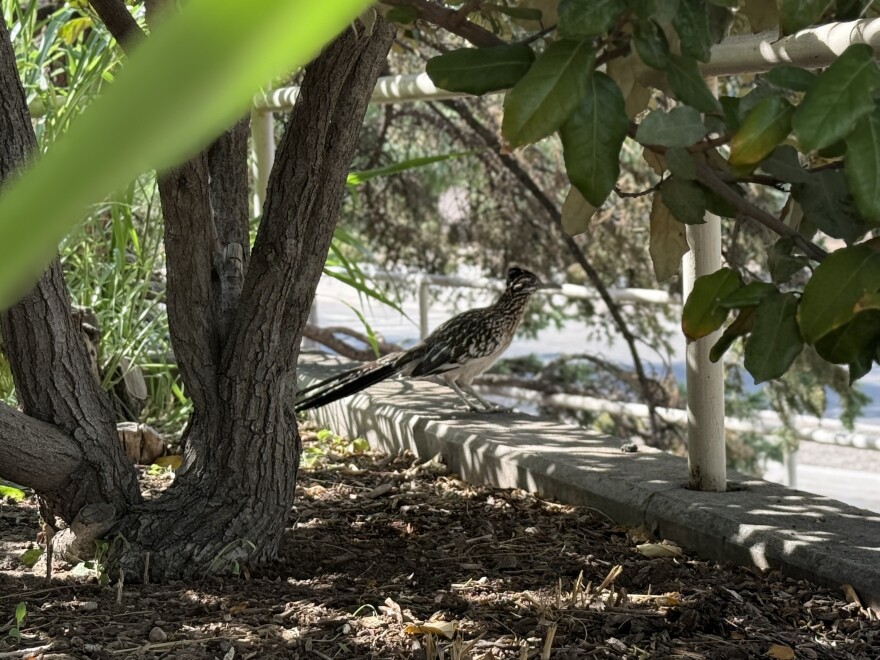is the curator of birds at the University of New Mexico’s .
“I think New Mexico is perfect for roadrunners. The abundance of roadrunners demonstrates that,” Witt said.
The greater roadrunner is a member of , and is a truly unique species. Not only does it resemble a tiny distant relative of a velociraptor, but it rarely, if ever, drinks water. The dry heat of our state and the abundance of desert lizards makes for a pretty ideal home.
Roadrunners get what little water they do need . Lizards are their preferred snack, but those can be scarce during winter, so they have to find a substitute,
“Most of the energy that they’re consuming in Albuquerque comes from, what I call, the Bird Feeder Economy,” Witt said.
The “bird feeder economy” looks like this: Many people put birdseed out in their yards, small birds and mice eat that, and bigger birds eat those guys when other prey is unavailable.

Almost like snakes, roadrunners typically swallow their food whole. They retain the meat and nutrient bits of the prey, but regurgitate indigestible bits like bones or feathers.
Witt said it’s probably not just prey behind the abundance of roadrunners in Albuquerque specifically, but may have to do with the habitat structures and the community.
“The urban roadrunners in Albuquerque seem to be unique among cities where roadrunners occur. There are certainly a lot of cities where roadrunners live, from Lubbock to Las Cruces to Phoenix to Fresno. But none of these cities really have roadrunners integrated into the urban spaces and sort of the concrete spaces like Albuquerque does,” Witt said.
These feathered friends are obviously fans of the desert landscape. They like to hang out in brush and plants since they don’t fly, although they can jump short distances and glide down from trees or rooftops.
It also helps that they’re embraced so deeply by folks around the city. The university area is particularly flooded with them, gaining the attention of their adoring fans.
Renata Gonzales is a former student at UNM and lives in the area.
“My dad used to tell me when I was little, that when he grew up out in the mesas, and there was nothing really out there, whenever you saw a roadrunner it was a sign that this place has been here for millions of years. And this real-life dinosaur had survived through the desert,” Gonzales said.
These dinosaur-resembling creatures are a bit odd, and if they were any larger, they could be classified as terrifying predators. But…
“We get to live amongst these creatures and it’s a great joy to be able to observe them. Especially when they’re engaging in their natural courtship and territorial and breeding behaviors,” Witt said, “They make so many cool sounds, some with their bills and some with their vocal cords. And they wag their tails back and forth and give these beautiful cooing songs and clack their bills,”
They certainly make desert life more interesting.
To see community contributed content of roadrunners, visit our or @��ɫ��news





